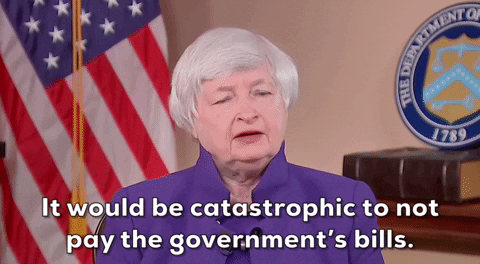There's been chatter about the US Congress's inability to agree on a course of action for managing the country's debt. But what is a "debt ceiling," and why does the world care so much about it?
The US debt ceiling is the amount of money the US government can borrow to cover its financial obligations to pay for things like interest on existing debt, social assistance programs like Medicaid, government employee salaries and tax refunds.
- The debt ceiling is currently at US$31.4 trillion, and if it isn't raised to allow more borrowing, the US government won’t be able to fund its spending per Time Magazine.
What's happening: Most Congress-watchers expect the Republicans to refuse to raise the debt ceiling (at first, at least) unless Democrats agree to steep concessions, which they are unlikely to do.
- Democrats and Republicans have negotiated successfully to raise the debt ceiling in the past and avoid a default on the country’s debt, but there’s always a risk that talks fail.
- A default would cause "irreparable harm to the US economy" and "global financial stability,” according to Treasury Secretary Janet Yellen.
Why it matters to Canadians: We’re tightly integrated with the US economy, so Canadians will feel the ripple effects of debt ceiling drama south of the border.
- "Trade makes up a big share of our GDP, and about three-quarters of our exports go to the US," public policy professor Kristen Hopewell told Global News. "We're so integrated economically … that we would be hit extremely hard."
- The last time the US came close to defaulting on its debt by failing to raise the debt ceiling in 2011, stock markets fell 7% in one day.
Bottom line: While it's come close, the US has never defaulted on its debt, and experts are optimistic that, despite the Congressional soap opera playing out right now, it won’t happen this time, either.
